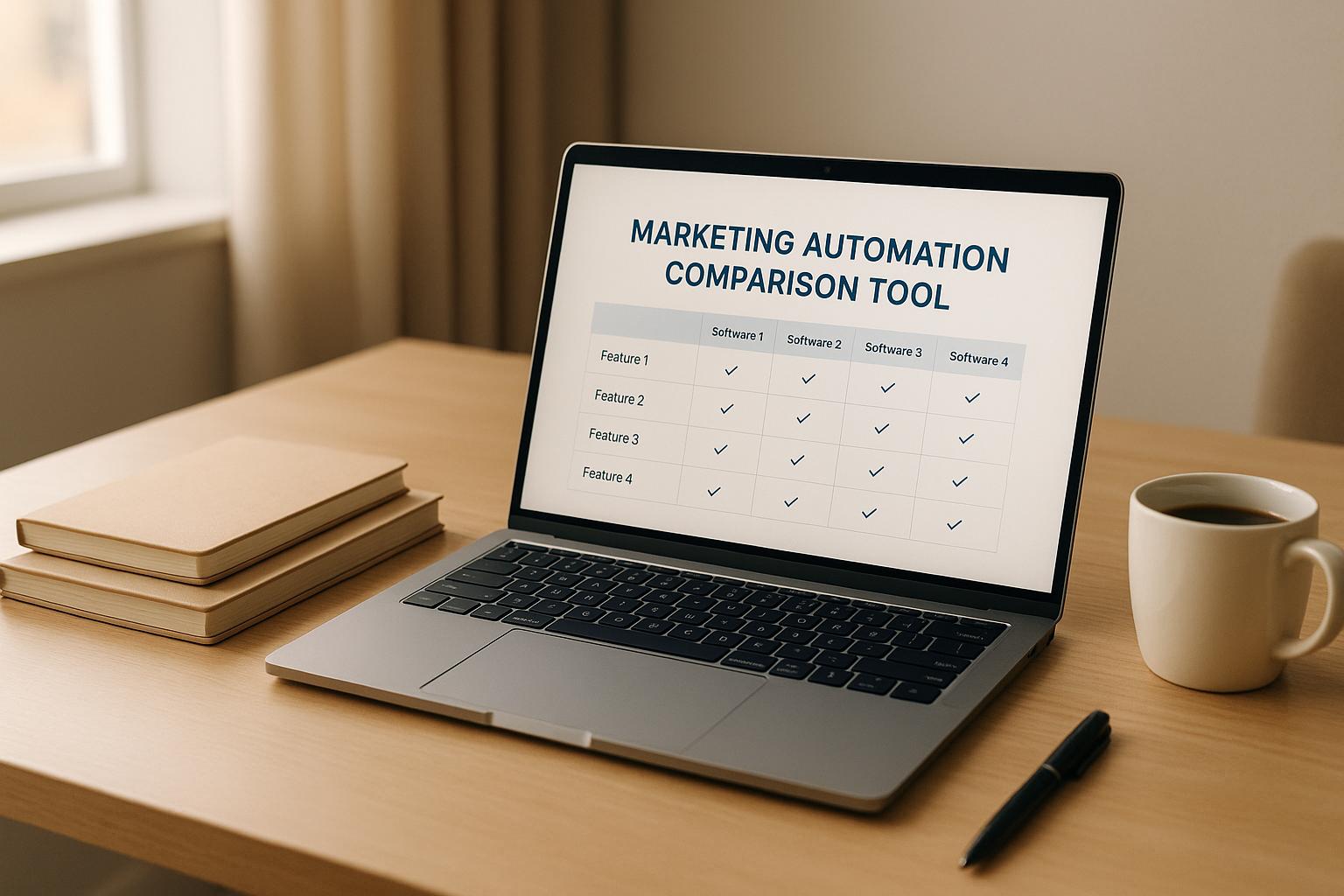AI is transforming how sales professionals negotiate equity. By analyzing performance metrics like deal size, customer retention, and sales velocity, AI provides data-driven insights that empower salespeople to secure more ownership in their companies.
Key takeaways:
- Sales-to-equity agreements tie company ownership to performance milestones.
- AI tools analyze past achievements, predict future contributions, and benchmark performance against peers.
- Metrics like quota attainment, customer lifetime value, and efficiency improvements strengthen negotiation arguments.
- AI-powered dashboards, CRM integrations, and predictive analytics help salespeople present clear, data-backed cases for larger equity stakes.
This article explains how sales professionals can use AI to turn performance data into stronger equity negotiations.
The Truth About AI in Negotiations: What Sales Pros MUST Know
What Sales-to-Equity Agreements Are
Sales-to-equity agreements offer sales professionals a stake in the company in exchange for hitting specific performance milestones. This approach moves beyond the typical salary-plus-commission setup by tying personal rewards to the company’s long-term success.
Sales-to-Equity Agreement Basics
At their core, these agreements turn performance achievements into company ownership. Equity is granted when predefined goals are met, with the amount depending on factors like the company’s growth stage, the salesperson’s role, and their expected impact on the business.
Typically, stock options are awarded with an exercise price based on the company’s valuation at the time of the grant. As the company grows, the value of these options can increase, creating a strong incentive for high performance. AI tools can also play a role by helping quantify performance metrics and refining negotiation strategies.
Key Points in Equity Negotiations
When negotiating equity, several factors come into play. Setting clear performance metrics is crucial, as is understanding the company’s stage of development and market positioning. Revenue targets and closure rates often serve as benchmarks for discussions. Additionally, market comparisons and geographic trends can influence the equity package’s structure and scale.
A deep dive into the company’s business model and leadership team can provide additional insights, helping you approach negotiations with a well-rounded perspective.
U.S. Standards and Formats
In the United States, equity agreements are governed by specific legal and regulatory frameworks. These agreements must include clear valuation methods, detailed vesting schedules, and standard formats for financial figures, such as dollar amounts, percentages, and dates. Carefully reviewing these components ensures that the agreement aligns with regulations and accurately reflects the terms you’ve negotiated.
Grasping these essentials lays the groundwork for leveraging AI tools to analyze performance data, which will be explored in later sections.
Using AI Tools for Better Performance Data
AI tools are transforming the way sales data is analyzed, turning raw numbers into actionable insights. These tools simplify complex datasets, making it easier to highlight key performance metrics that can support equity negotiations. By using AI, you can present a compelling case for why your contributions warrant a larger equity stake.
AI Platforms That Measure Sales Impact
AI dashboards provide instant clarity on your sales performance. These platforms go beyond tracking closed deals - they also monitor metrics like pipeline velocity, customer lifetime value, and deal progression, giving you a comprehensive view of your impact.
With AI analytics, you can break down your contributions in detail. Metrics like deal size, customer retention rates, and cross-selling opportunities are analyzed alongside forecasts based on both current and historical data. AI also evaluates your customer acquisition costs and compares them to team averages, helping you see how your performance stacks up. This level of analysis makes it easier to benchmark your results against established industry standards.
Comparing Your Performance to Industry Standards with AI
AI tools excel at benchmarking by tapping into extensive databases of industry metrics. These comparisons allow you to see how your performance measures up against peers in similar sectors or companies of the same size.
For example, AI can analyze your quota attainment consistency, the complexity of deals you handle, and your customer satisfaction scores. This data is then compared to anonymized metrics from comparable companies. Additionally, AI can assess how your performance in specific regions or industries compares to broader trends. If the data shows that you close deals faster or secure higher contract values than others in your field, it strengthens your case for increased equity.
Presenting Data to Support Negotiations
When it comes to negotiations, how you present your data matters. Visuals like charts and graphs can make trends and patterns more accessible, showcasing your contributions in a clear and compelling way.
AI tools can also reveal how your activities directly impact company outcomes. For instance, you can demonstrate how targeted prospecting has driven revenue growth or how effective customer management has opened doors for expansion. By focusing on metrics - like lower customer acquisition costs or higher lifetime value from your deals compared to team averages - you can steer the conversation toward objective, data-backed evidence.
Finally, AI-powered ROI calculations can quantify your overall financial impact. These calculations consider not just direct revenue but also cost savings from streamlined deal cycles and the long-term value of customer relationships. Armed with this data, you’ll have a strong, evidence-based foundation for negotiating a larger equity stake.
Building Your Case with Data for Equity Negotiations
Using AI-driven performance insights, you can build a strong case for equity negotiations by organizing data that highlights your achievements, future potential, and value compared to benchmarks. Presenting this information effectively can make your contributions undeniable to decision-makers.
Collecting and Analyzing Your Performance Data
Start by assembling a portfolio of performance data covering the past 12–18 months. Use AI tools to track metrics that go beyond revenue, such as deal complexity, customer satisfaction, and pipeline efficiency. Look for patterns that demonstrate consistency and growth - things like seasonal variations in closing rates or faster deal velocity.
Document specific achievements that stand out. For instance, have you reduced the average sales cycle length? Increased average deal size? Maintained above-average customer retention rates? These are tangible indicators of your impact.
Don’t overlook qualitative data either. Metrics like customer feedback, referral rates, and cross-selling success can provide a fuller picture of your contributions. AI can even analyze your communications to highlight the unique strategies you bring to the table.
Cost-efficiency metrics are another valuable asset. AI can calculate your customer acquisition cost compared to team averages and measure the lifetime value of the customers you’ve secured. These numbers often reveal hidden strengths that traditional metrics might miss, giving you extra leverage in negotiations.
Predicting Future Contributions with AI Analytics
Equity negotiations aren’t just about past performance - they’re about the value you’ll create in the future. This is where AI’s predictive capabilities shine.
Use AI forecasting to estimate your revenue contributions over the next 2–3 years. These projections can integrate market trends, historical performance, and company growth factors like territory expansion or new product launches. For example, if your accounts have untapped potential or your region shows signs of growth, AI can quantify these opportunities.
AI can also model scenarios to show how your performance might scale with additional resources or responsibilities. If you’ve excelled with enterprise accounts, projections could illustrate the impact of assigning you more high-value prospects or a larger territory. Combining these forward-looking insights with your historical data strengthens your case for increased equity.
Creating Comparison Tables for Negotiations
Visual comparisons can make your case more compelling. AI tools can help you create tables that clearly show how your performance stacks up against team averages, industry standards, and historical company metrics. These comparisons make your value easy to grasp at a glance.
Here’s an example of a performance comparison table:
| Performance Metric | Your Results | Team Average | Industry Benchmark |
|---|---|---|---|
| Quota Attainment | 127% | 98% | 105% |
| Average Deal Size | $47,500 | $32,000 | $38,000 |
| Sales Cycle (Days) | 68 | 89 | 82 |
| Customer Retention | 94% | 87% | 85% |
You can also create ROI comparison tables to highlight the revenue and profit you generate relative to your compensation. AI tools can calculate complex ROI scenarios, factoring in customer lifetime value, referral revenue, and cost savings from your efficient sales processes.
To go a step further, build projection tables that model different equity scenarios. Show how various equity percentages align with your projected contributions and the company’s expected growth. This approach demonstrates that you’re not just asking for more - you’re showing how your performance aligns with mutual value creation.
sbb-itb-9cd970b
AI-Powered Negotiation Tools and Automation
Equity negotiations often come down to perception, which can make objectivity a challenge. That’s where AI-powered tools step in, offering clarity by automating data extraction and analysis. Let’s dive into how these tools work and how they can elevate your negotiation strategy.
How AI Negotiation Agents Work
AI negotiation tools rely on historical data, market benchmarks, and real-time performance metrics to craft strategies that work. By processing vast amounts of information, they uncover patterns and insights that traditional methods often miss.
These agents analyze your performance data, market standing, and equity goals, comparing them to similar cases in their database. From there, they can suggest discussion points, timing strategies, and compromise positions that have historically led to success. For example, they might identify the best times to initiate conversations or recommend specific terms to focus on.
Some tools go a step further, offering simulations and behavioral analysis. This allows you to practice different scenarios and gain insights into your counterpart's negotiation style, often based on their past communications and decision-making habits.
Linking AI to Your SaaS Systems
Modern AI tools integrate seamlessly with popular SaaS platforms like CRMs and contract management systems, giving you a comprehensive view of your negotiation landscape.
- CRM Integration: AI tools can pull data from platforms like Salesforce, HubSpot, and Pipedrive, accessing your sales history, deal sizes, close rates, and customer satisfaction metrics. This ensures the AI has the latest data to inform your negotiation strategy.
- Contract Management Systems: By accessing your historical equity agreements, these tools identify trends and pinpoint areas where terms could be improved.
These integrations often happen through API connections, which automatically sync your latest achievements and keep your preparation up-to-date.
Achieving Better Results with Automation
Automation takes integration a step further, providing timely, actionable insights to sharpen your negotiation approach.
For example, AI tools can analyze performance cycles, funding events, or key achievements to suggest the best timing for equity discussions. Instead of guessing, you’ll know when your leverage is at its peak, increasing the likelihood of a favorable outcome.
Automated benchmarking is another game-changer. These features continuously compare your compensation and equity package to market standards, alerting you when discrepancies arise. This ensures your arguments are backed by data, making them harder to refute.
AI automation also simplifies the preparation process. It can generate polished presentations highlighting your accomplishments and future potential, tailored to strategies that have worked in similar cases. This saves time while ensuring your materials are professional and persuasive.
Finally, these tools help you steer clear of common pitfalls. By flagging unrealistic approaches or misaligned expectations, they keep your focus on data-driven arguments. This support is invaluable when navigating the pressures of high-stakes negotiations, allowing you to stay confident and composed.
Case Studies and Practical Examples
While there aren’t many published case studies specifically focused on using AI to secure larger equity stakes, the insights from AI-driven sales performance analytics provide valuable lessons. These insights can be a solid foundation for internal discussions about compensation adjustments, including equity considerations.
Insights from AI-Driven Sales Analytics
Organizations often rely on AI to pull together data from CRMs, sales records, and revenue tracking tools. This creates performance dashboards that go beyond just tracking closed deals - they capture metrics like pipeline development, customer engagement, and retention. These detailed insights not only measure sales effectiveness but also help build a stronger case during equity negotiations.
- Performance benchmarking allows you to compare individual contributions against industry standards and company averages. These objective comparisons can provide a clear, data-backed foundation for your negotiation.
- Predictive models use historical data to project future revenue contributions. While direct links between these models and equity negotiations are still being explored, their principles can add depth to broader compensation discussions.
Key Considerations for Using AI Data in Compensation Discussions
AI-driven sales analytics offer several takeaways that can be applied to compensation and equity discussions:
- Timing: AI can help identify the best moments for performance reviews by analyzing business cycles and personal performance peaks. Choosing the right time can make a big difference in negotiation outcomes.
- Data Presentation: Simplifying complex data into visual summaries or easy-to-understand metrics is much more effective than overwhelming decision-makers with raw numbers. Clear, accessible data helps make your case more compelling.
- Market Context: Comparing your performance to industry benchmarks can frame your contributions in a broader context. While equity-specific benchmarks may be rare, general salary data can still provide useful insights.
- Future Potential: Combining historical performance insights with projections - like predicted revenue growth or market expansion opportunities - can strengthen your argument for revisiting compensation structures.
These strategies naturally lead to demonstrating your value through ROI-focused analytics.
Demonstrating ROI with AI Analytics
AI tools can go beyond basic metrics to provide a deeper understanding of your contributions. Here’s how:
- Customer Lifetime Value (CLV): By analyzing customer behavior and purchase patterns, AI can project long-term revenue from your efforts, showing how your work extends beyond just closing deals.
- Pipeline Quality: Metrics like deal probability, sales cycle efficiency, and conversion rates help highlight sustainable performance over sheer volume. This adds depth to your negotiation narrative.
- Efficiency Metrics: Improvements in areas like reducing customer acquisition costs or shortening sales cycles directly impact the company’s bottom line. These metrics can support your case for a more comprehensive compensation package.
Conclusion: Getting More Equity with AI Data
AI is changing the game when it comes to equity negotiations. Instead of relying on subjective arguments, you can now use detailed analytics to showcase your value in a way that's hard to dispute.
To make the most of AI, start by quantifying every aspect of your performance. Look at metrics like customer lifetime value, pipeline quality, and efficiency improvements to highlight your contributions. These numbers tell a story about the impact you're making.
Tap into the AI tools already built into your CRM, like Salesforce Einstein, HubSpot Predictive Analytics, or Microsoft Dynamics 365 AI. Use them to establish baseline metrics before your next performance review. AI can even help you identify the best times to initiate compensation discussions - data-backed, proactive conversations often lead to better results than waiting for the usual annual review.
Go beyond past achievements by leveraging AI's predictive models to project your future contributions. Show what you’re capable of delivering over the next 12–24 months. Framing your case around future potential can make a stronger impression.
When presenting your insights, keep it simple and impactful. A single, visually compelling dashboard that compares your performance to industry benchmarks can be far more effective than a stack of spreadsheets. A clear and concise presentation helps drive home your points during negotiations.
FAQs
How can salespeople use AI to negotiate better equity in their companies?
Sales professionals today can tap into AI-powered tools to better understand their performance, market standing, and contributions to their company's success. These tools sift through data to highlight measurable impacts, helping individuals present a stronger case when negotiating for improved equity terms.
Using features like predictive analytics and real-time performance tracking, salespeople can showcase their value in concrete, data-driven terms. These tools also uncover trends and benchmarks that empower professionals to negotiate with confidence. Armed with these insights, they can enter discussions prepared with a solid, fact-based argument rather than relying on assumptions.
What AI tools and performance metrics can salespeople use to negotiate for more equity?
Sales professionals can tap into AI tools like Salesforce AI and similar analytics platforms to better understand their performance and overall market value. These tools dig into key data points like deal success rates, pipeline growth, customer engagement, and revenue contributions, offering a clear picture of how their efforts drive the company's growth.
By zeroing in on metrics that showcase their accomplishments - such as closing rates, revenue generated, and client retention - salespeople can present a compelling, data-driven case for greater equity. AI-powered insights make it simpler to highlight their individual contributions and approach negotiations with confidence.
How can AI help sales professionals compare their performance to industry standards, and why is this useful for negotiating equity?
AI gives sales professionals a powerful edge by diving into massive datasets to measure individual performance against industry standards. It pinpoints critical metrics, spots areas needing improvement, and paints a clear picture of how a salesperson's achievements compare to others in the market.
These insights become especially useful during equity negotiations. Armed with solid data on their market value, performance, and contributions to company growth, salespeople can make a stronger argument for a larger equity share. By anchoring these discussions in objective data, AI helps make the negotiation process more balanced and transparent.



